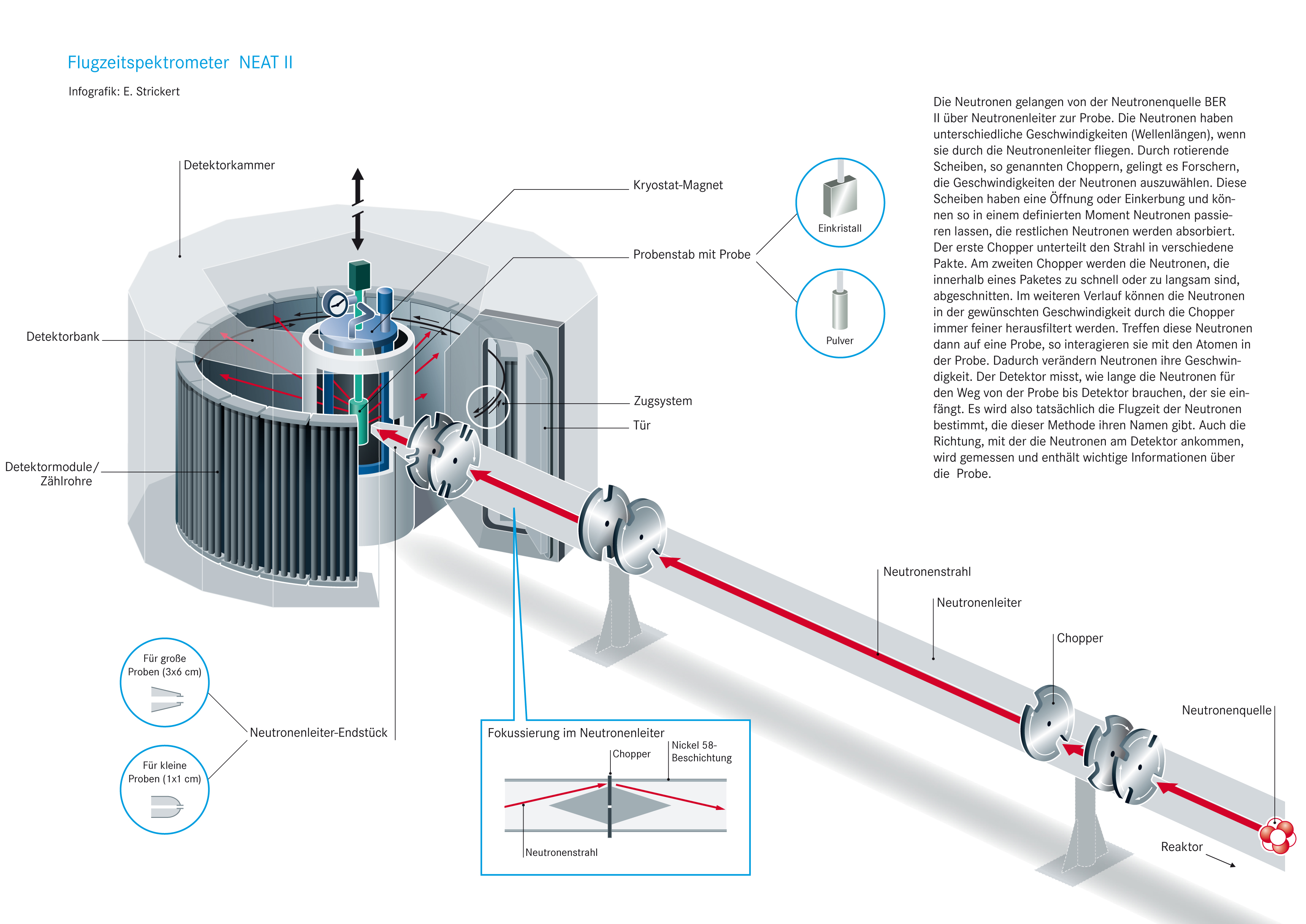Institute Electrochemical Energy Storage
New time-of-flight spectrometer expands range of experiments feasible with neutron source at BER II
Researchers from all over the world will be able to investigate the structure and dynamics of substances – including under extreme conditions.

Illustration as pdf: NEAT II Time–of-Flight Spectrometer
What are time-of-flight experiments?
The use of neutrons for research facilitates detailed insight into the composition and structure of substances. Various experimental opportunities and options are available to scientists at the BER II neutron source in Berlin to provide them with exactly the information they require. One of the important methods is referred to as time-of-flight experiments using neutrons. Researchers are able to investigate not just the composition and structure of materials with this technique, they also simultaneously obtain information about the motions of the atoms in the sample. Researchers need specially designed instruments for this purpose. The construction of the NEAT II instrument is an important future project of HZB that will lead to a unique means of investigation at BER II – especially in conjunction with high-intensity magnetic fields. Researchers from all over the world will be able to investigate new areas of magnetism, materials sciences, and soft matter (biological matter).
What will be new about NEAT II
The capability of the new NEAT II time-of-flight spectrometer will forty-fold that of the old instrument. A significantly higher neutron flux will prove advantageous to experiments. The more neutrons researchers have available, the better information they can obtain about the sample. Considerably more neutrons will reach the probe as a result of new components such as neutron guides with super-mirror coatings, but also as a result of the BER II upgrade. In addition, the angular range of the detector will be expanded by detectors that record spatial information. These facilitate investigations of single crystals and offer improved options for extreme sample environments. The detector chamber consists of non-magnetic materials to provide a more suitable environment for experiments involving high-intensity magnetic fields. NEAT II will offer researchers a broader range of instrument capabilities, such as in-situ examinations of biological or nanostructured materials. An extension to the neutron guide hall will provide improved sample handling for the modernised instrument.
How does NEAT II work?
Neutrons from the BER II neutron source reach the sample through neutron guides. The neutrons have differing speeds (wavelengths) when they travel through the neutron guides. Rotating disks called choppers enable researchers to select the speeds of the neutrons. These disks have an opening or notch and can therefore allow neutrons to pass through at a specified instant or interval, while the rest of the neutrons are absorbed. The first chopper subdivides the beam into different packets. At the second chopper, neutrons in a given packet that are too fast or too slow are blocked out. Neutrons with the desired speed can be increasingly selected for by choppers in further stages. If these neutrons then encounter a sample, they interact with the sample’s atoms. This alters the speed of the neutrons. The detector measures the length of time the neutrons travel from the sample to the detector that captures them. So the actual time of flight for the neutrons is measured, lending the method its name. The direction from which the neutrons arrive at the detector is also measured and contains important information about the sample.
